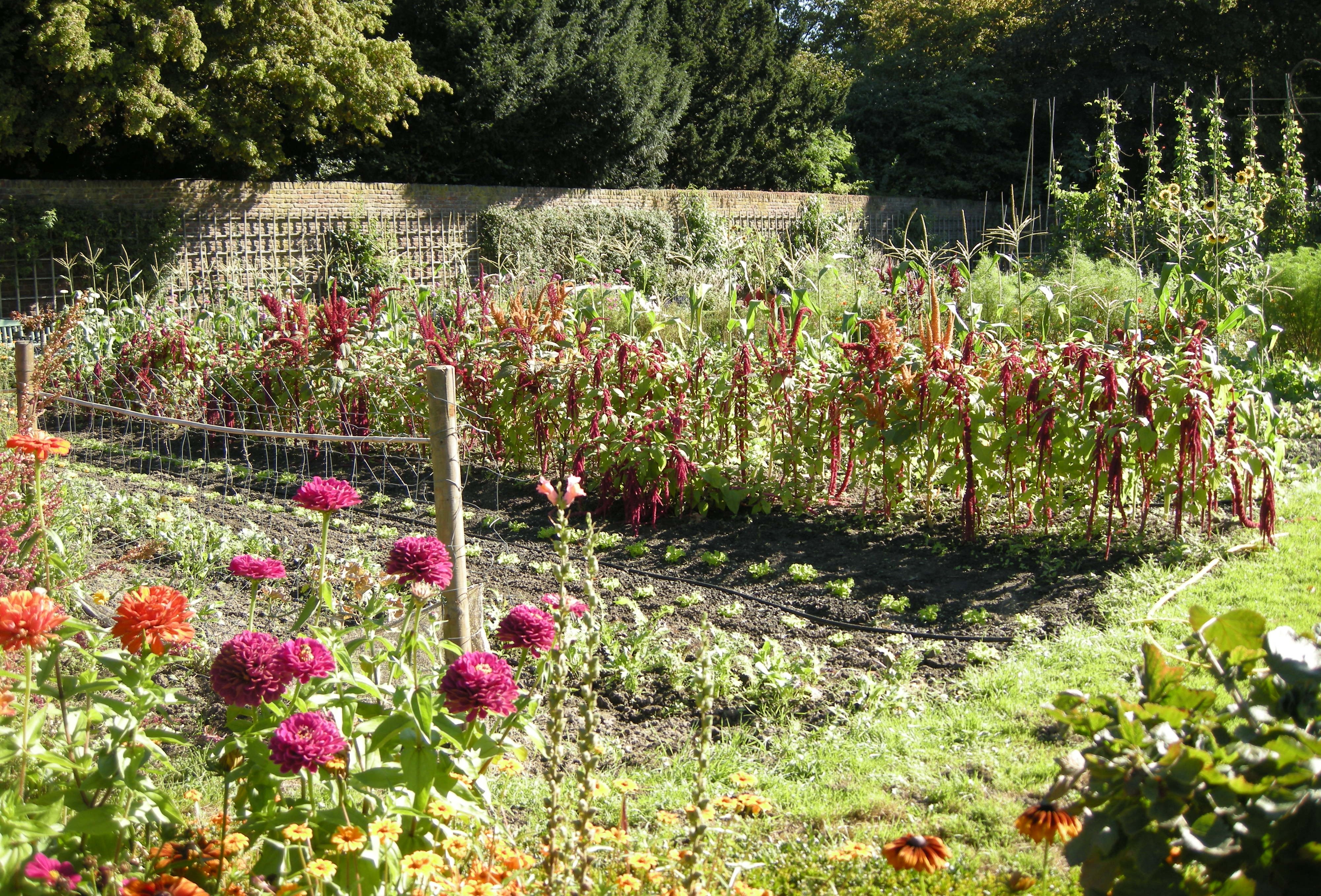An introduction to insectary plants
What makes a plant an insectary plant? Insectary plants provide food sources and shelter for beneficial insects, which attracts them and encourages them to stick around your garden. If you’ve already read our article Pest Hunters: Beneficial Predatory and Parasitic Insects, you know that there are many beneficial insects that prey on garden pests. By planting insectary plants we can encourage these predatory and parasitic insects to take up residence in our garden. Not to mention supporting pollinators which are much appreciated garden helpers!
You might be wondering: ‘if beneficial insects eat pests, why do they need plants for food?’ In many cases it’s the beneficial insects’ larvae that prey on insect pests while the adults feed mainly on pollen and nectar. This is why many insectary plants tend to be flowers or flowering herbs. In the case of herbs, it’s important to let at least some of the plants bloom if you want to attract beneficial insects.
Keep in mind that one lonely flowering plant will not entice an army of pest hunters! Aim to plant as many insectary plants as is possible with the space you have, and be sure to plant insectary plants with different bloom times to provide pollen and nectar all season long. Also, place insectary close to the plants you want to protect. If they’re too far away from your main garden the beneficial insects may not make the trek over.
To help with incorporating insectary plants in your garden plan, we’ve compiled a list of some common insectary plants and the beneficial insects they attract:
List of insectary plants
Ammi

In a study of insectary plants from the University of Connecticut, Ammi majus was found to attract the highest number of beneficial predatory and parasitic insect families amongst all plants studied. Ammi was also the only plant in the study that attracted two types of parasitic wasps- braconids and ichneumonids. Ammi generally blooms in spring and early summer.
Borage
Scientific name: Borago officinalis
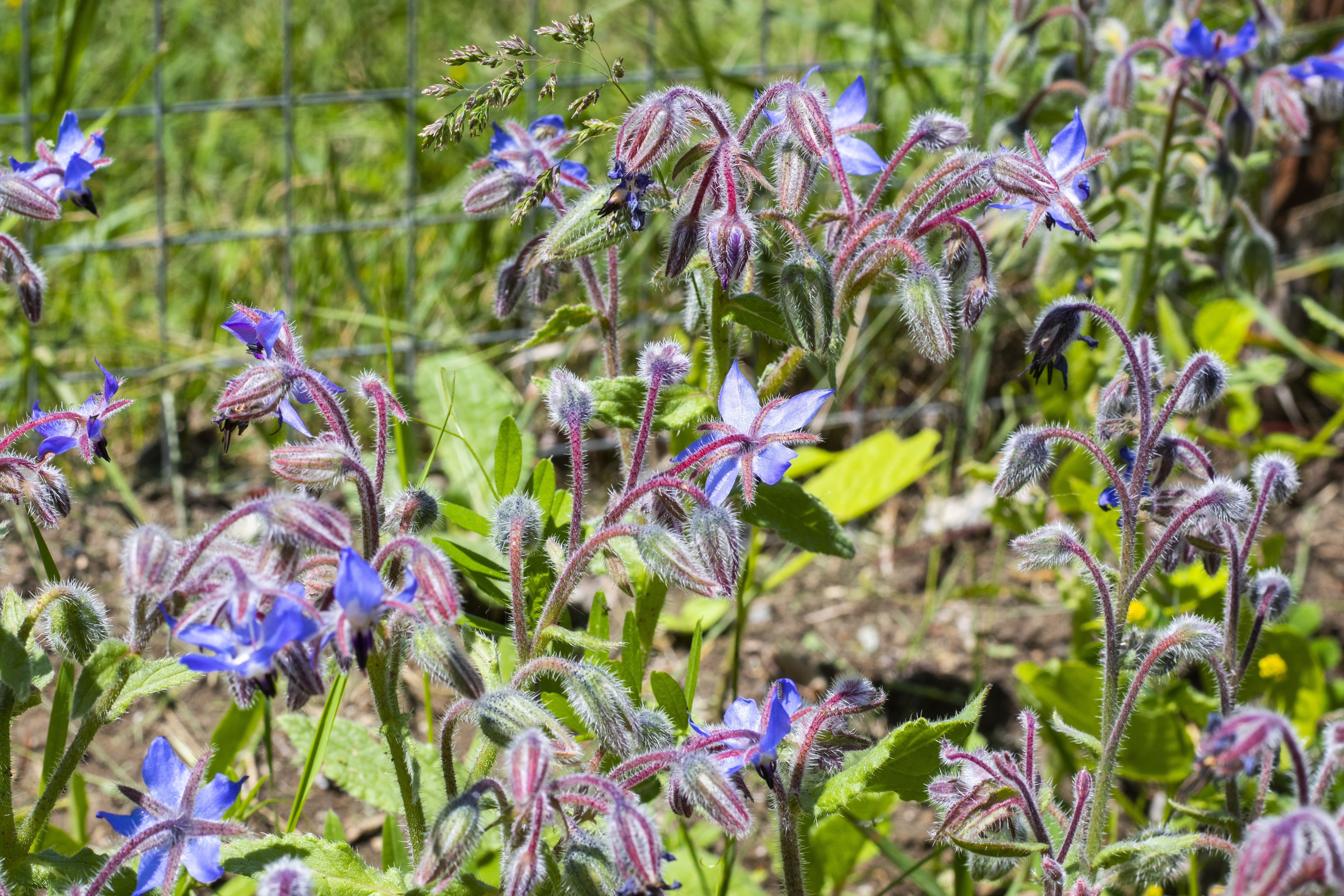
Borage is a favored pollinator plant in the garden. It is also highly attractive to beneficial insects such as lacewings, syrphid flies, and ground beetles. Borage may even help to repel hornworms and other pests! Borage self-seeds prolifically; regular deadheading can help to encourage flowering and to reduce the amount of seeds dropped. With good care borage will bloom for most of the growing season- from June to October or longer.
California poppy
Scientific name: Eschscholzia californica
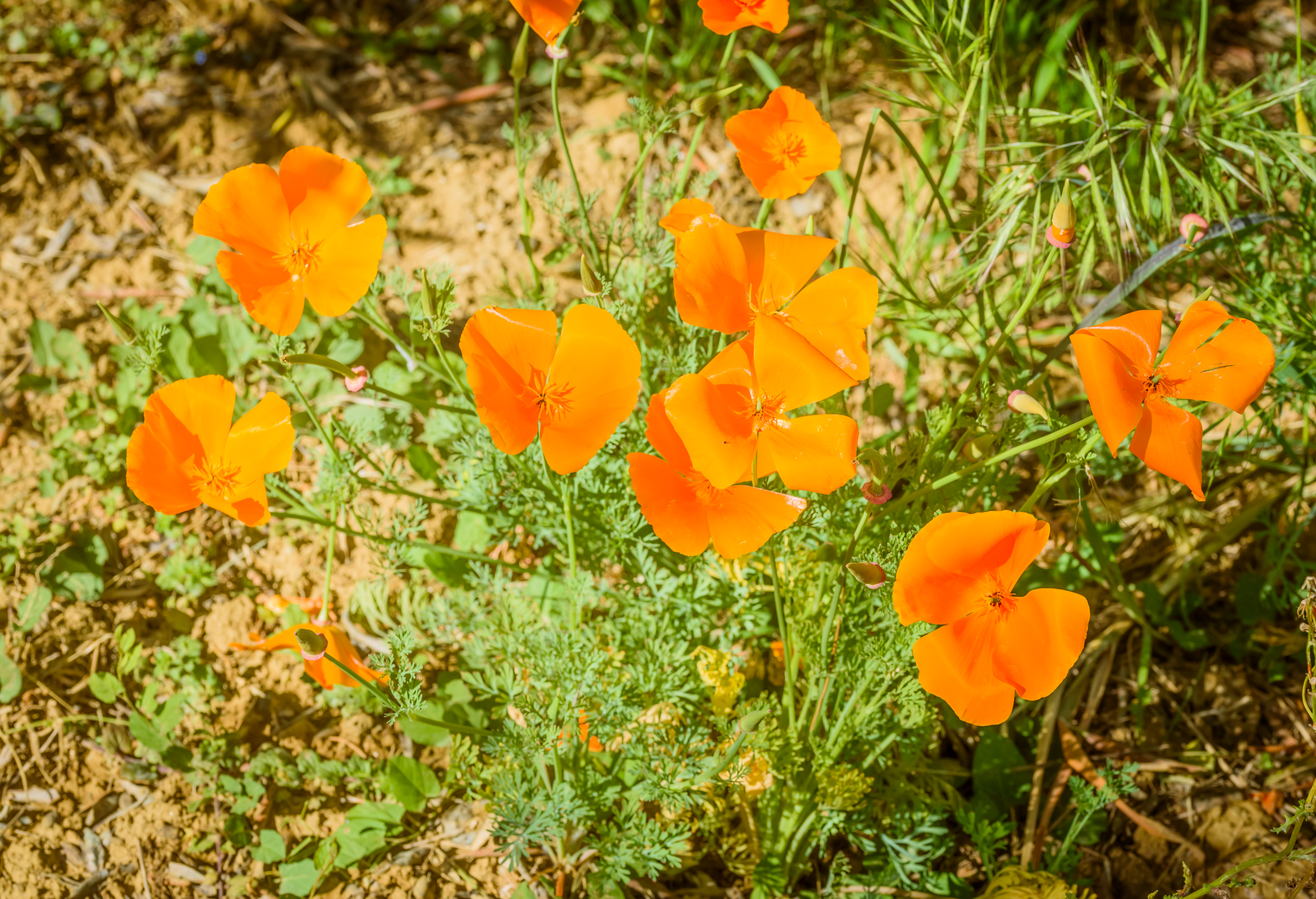
California poppies are native to the western United States and Mexico. They are highly attractive to syrphid flies and can also attract minute pirate bugs. California poppies bloom from early spring to summer, depending on the climate. In warmer areas they are perennials, but in colder climates they are grown as annuals.
Catnip
Scientific name: Nepeta cataria
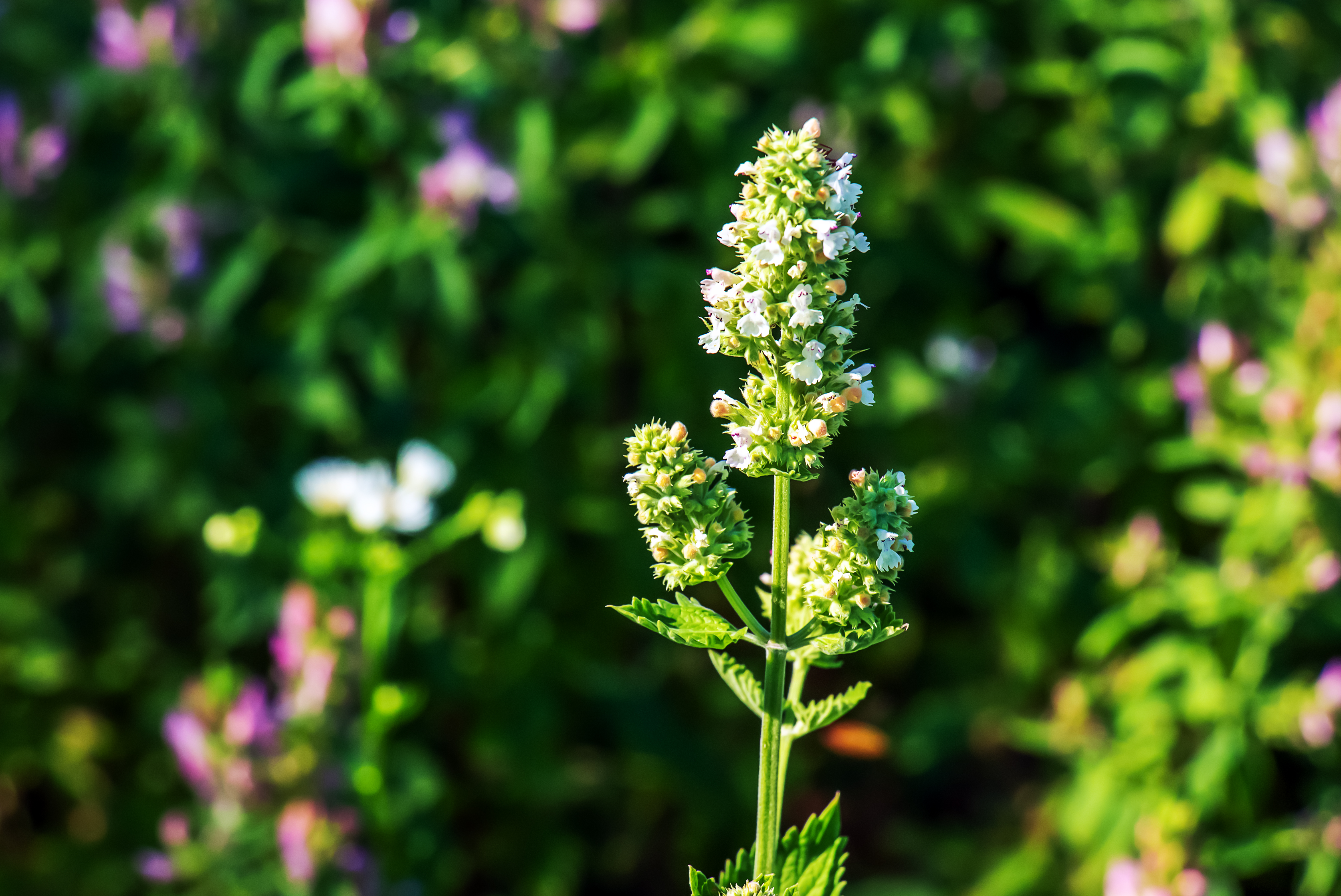
Catnip does double duty when comes to pest control. Not only does it attract beneficial nectar-feeding insects such as syrphid flies, but it also produces compounds that have been shown to repel pests such as aphids, squash bugs, and others. Catnip is an extremely aggressive spreader that also self-seeds prolifically, so you’ll want to keep it contained and grow it in an area where it cannot easily self-seed. Catnip usually blooms from late spring to mid-summer; deadheading when flowers die back can help to promote new blooms and reduce seed drop.
Chamomile
Scientific name: Matricaria chamomilla
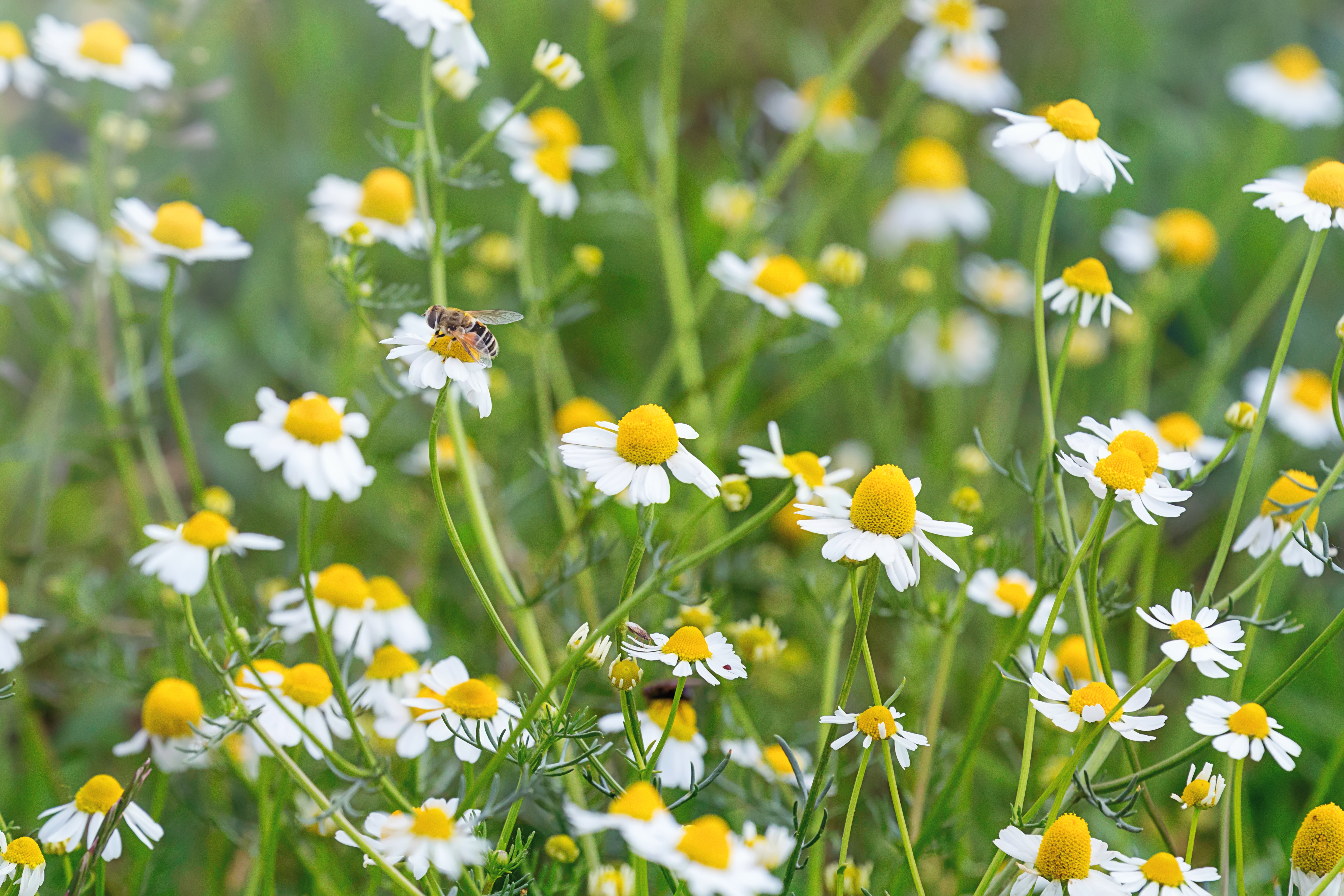
Studies have found chamomile to be highly attractive to syrphid flies as well as parasitic wasps. Chamomile may also help to attract lady beetles, lacewings, minute pirate bugs, and tachinid flies. Chamomile blooms from spring right through to fall, providing a valuable season-long food source for beneficial insects.
Cilantro
Scientific name: Coriandrum sativum
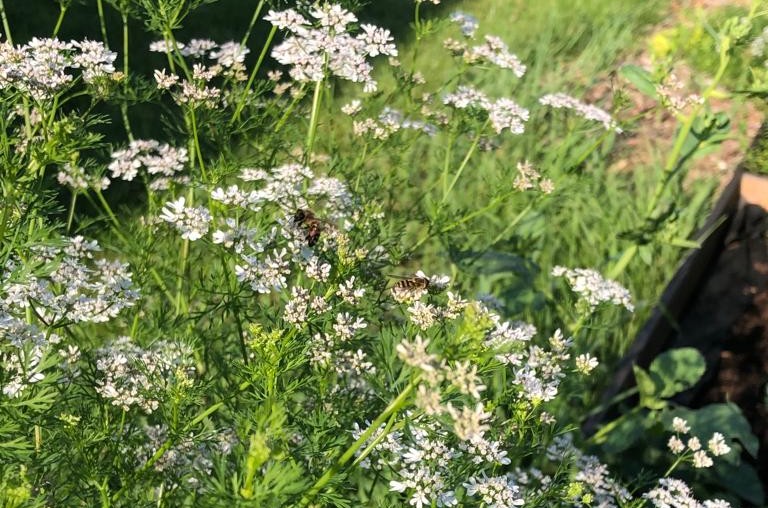
Cilantro goes to flower readily especially when warm, dry weather arrives in late spring to summer. While this can be disappointing if you’re growing cilantro for it’s leaves, it’s a boon for attracting a variety of beneficial insects such as syrphid flies, tachinid flies, parasitic wasps lacewings, lady beetles, and minute pirate bugs. Plus you can let cilantro form seeds then harvest them either to make coriander spice or to re-plant!
Dill
Scientific name: Anethum graveolens
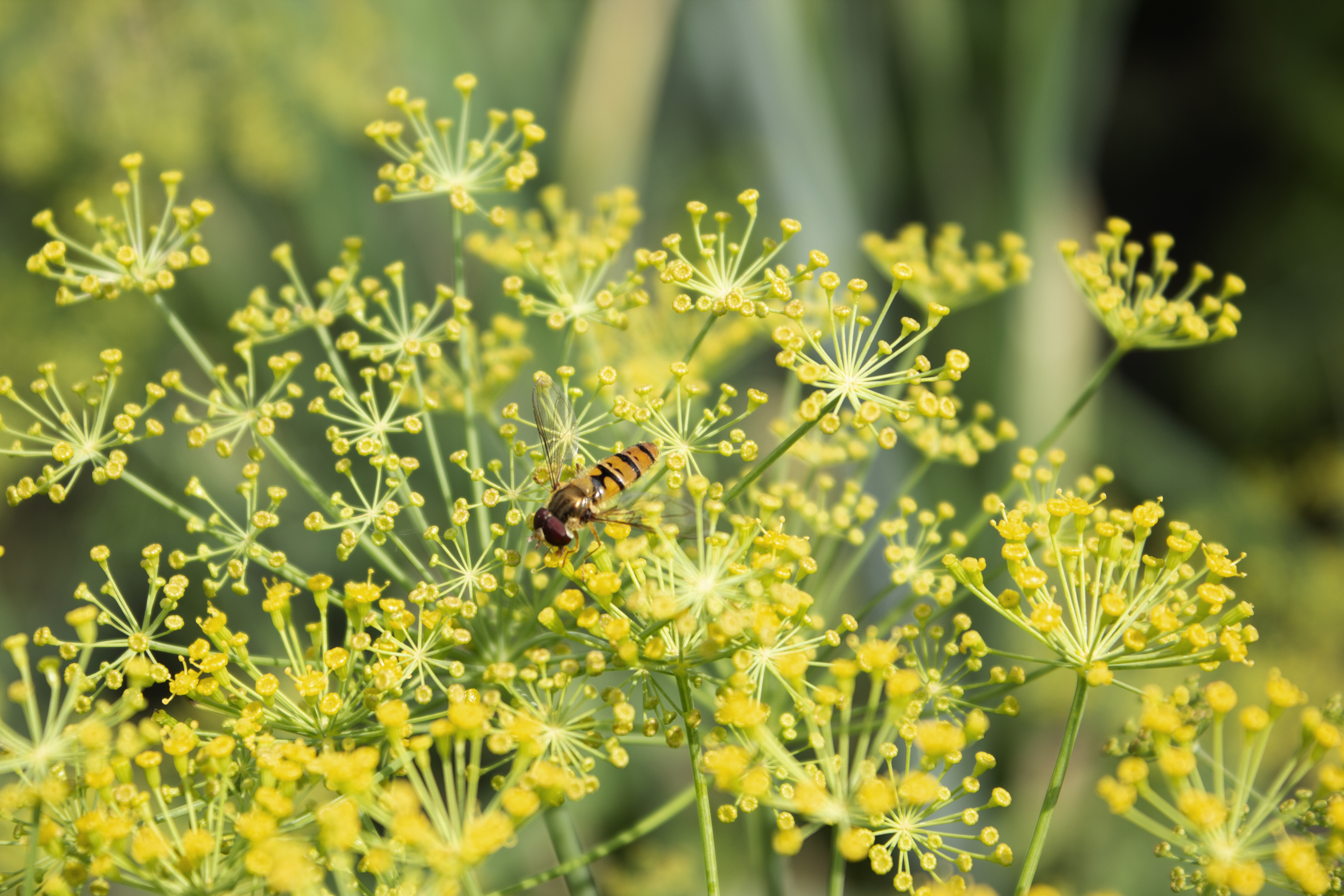
While dill is technically a biennial it often flowers in the first season, depending on the variety and when it was planted. Dill is attractive to syrphid flies, lacewings, lady beetles, and parasitic wasps. You might also find green-black-and-yellow caterpillars on your dill plants. These are black swallowtail butterfly larvae, and while they do eat dill (and related plants) they rarely cause major damage. It’s best to leave them be!
As a bonus, dill may also have a repellent effect on aphids, cabbage loopers, squash bugs, and other pests. Plus dill readily self-seeds if the flowers are left to form seed heads!
Lavender
Scientific name: Lavandula spp.
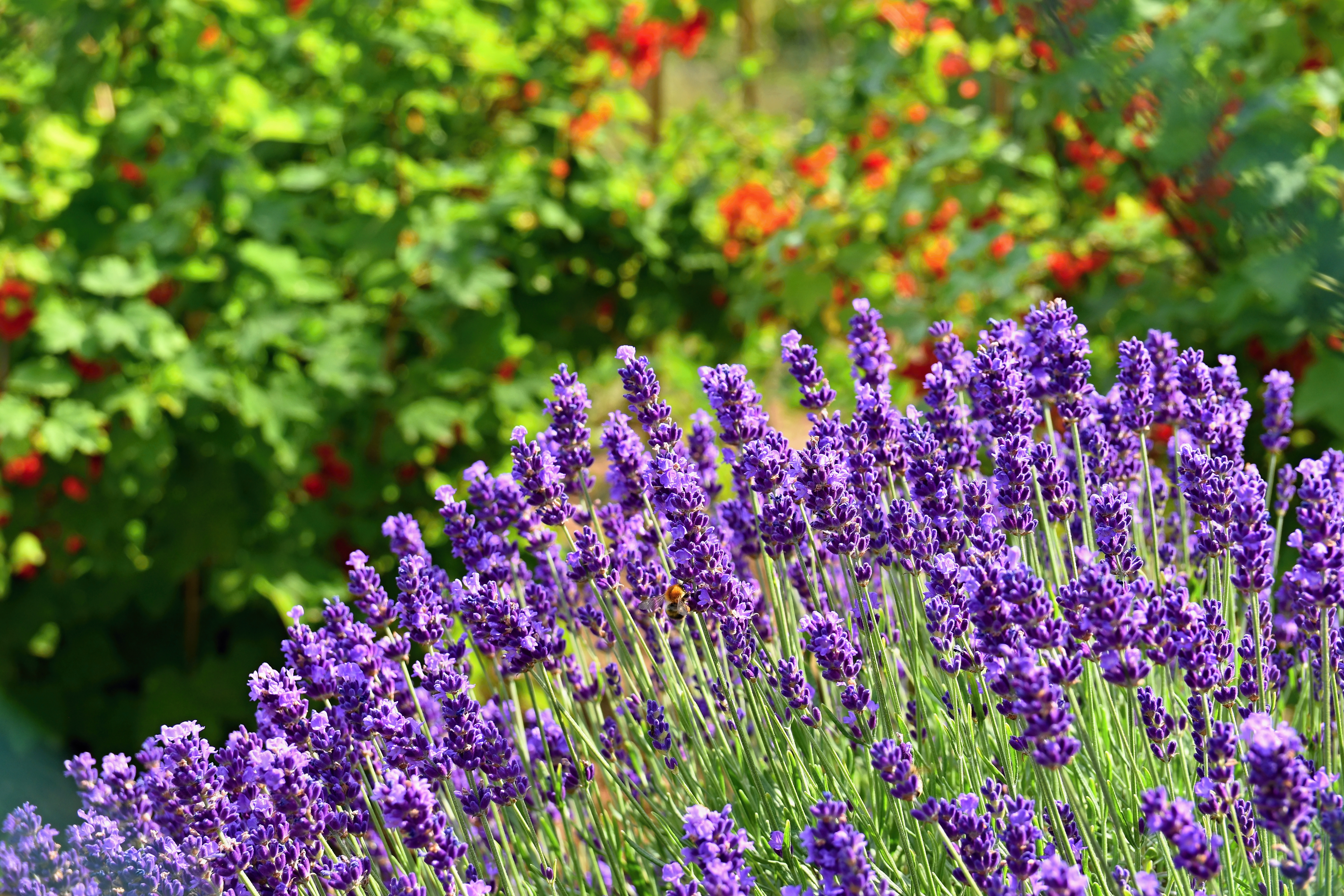
English lavender is attractive to syrphid flies and lady beetles. Once established, lavender is a drought-tolerant plant that does not like ‘wet feet’, although it will flower best if not left to completely dry out. Lavender typically blooms from late spring to early summer. The scent of lavender, while appealing to many of us, may have a repellent effect on mosquitos, moths, and other pests.
Marigold
Scientific name: Tagetes spp.
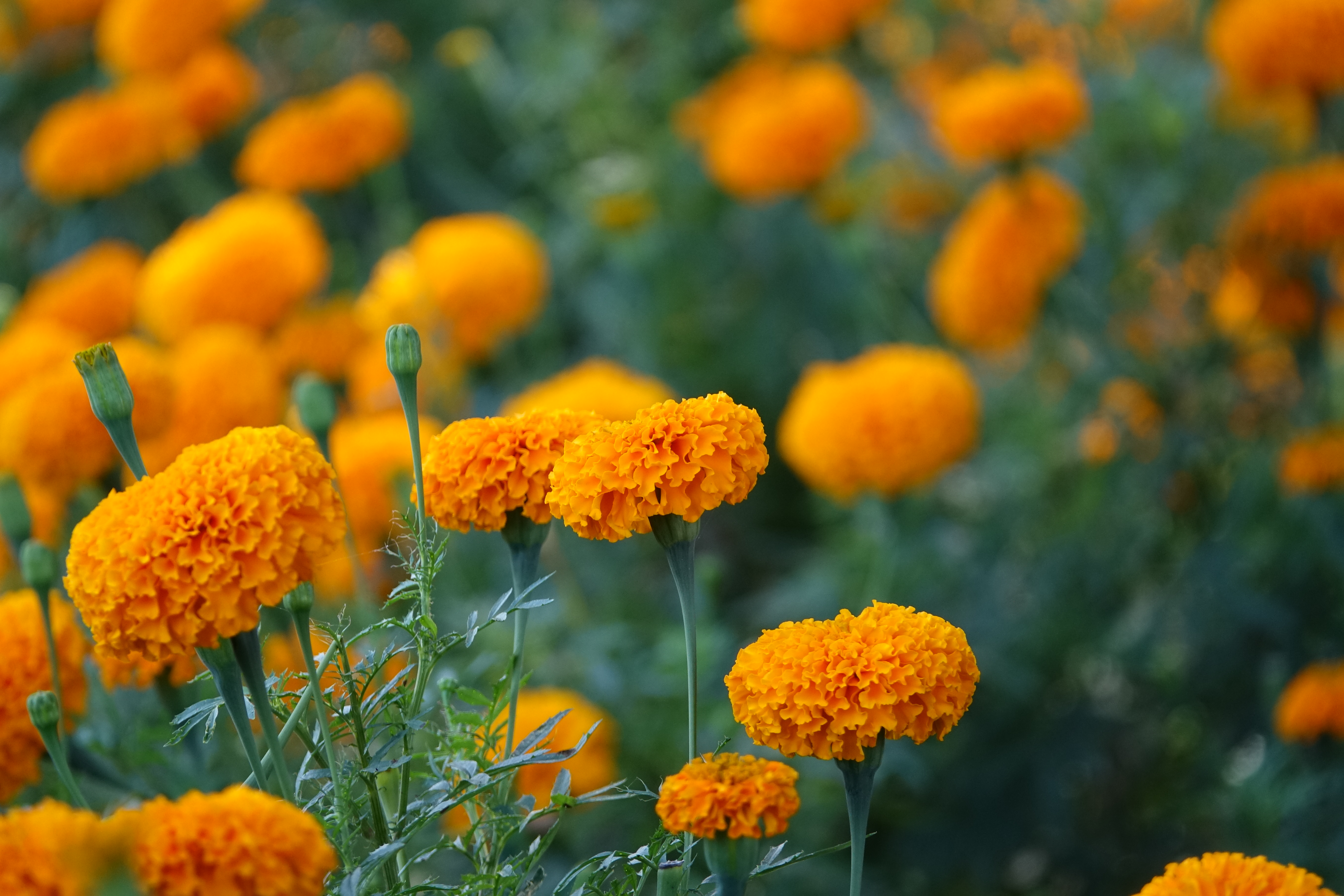
Marigolds are a well-known beneficial garden plant, and for good reason! Marigolds are attractive to a variety of beneficial insects including lacewings, damsel bugs, big-eyed bugs, lady beetles, parasitic wasps, and minute pirate bugs. Marigolds also have many reputed pest-deterring properties, although only some of these are proven with research and the effects can vary depending on the type of marigold and how it is used. Marigolds can bloom almost all season long provided they are cared for and regularly deadheaded!
Mint
Scientific name: Mentha spp.
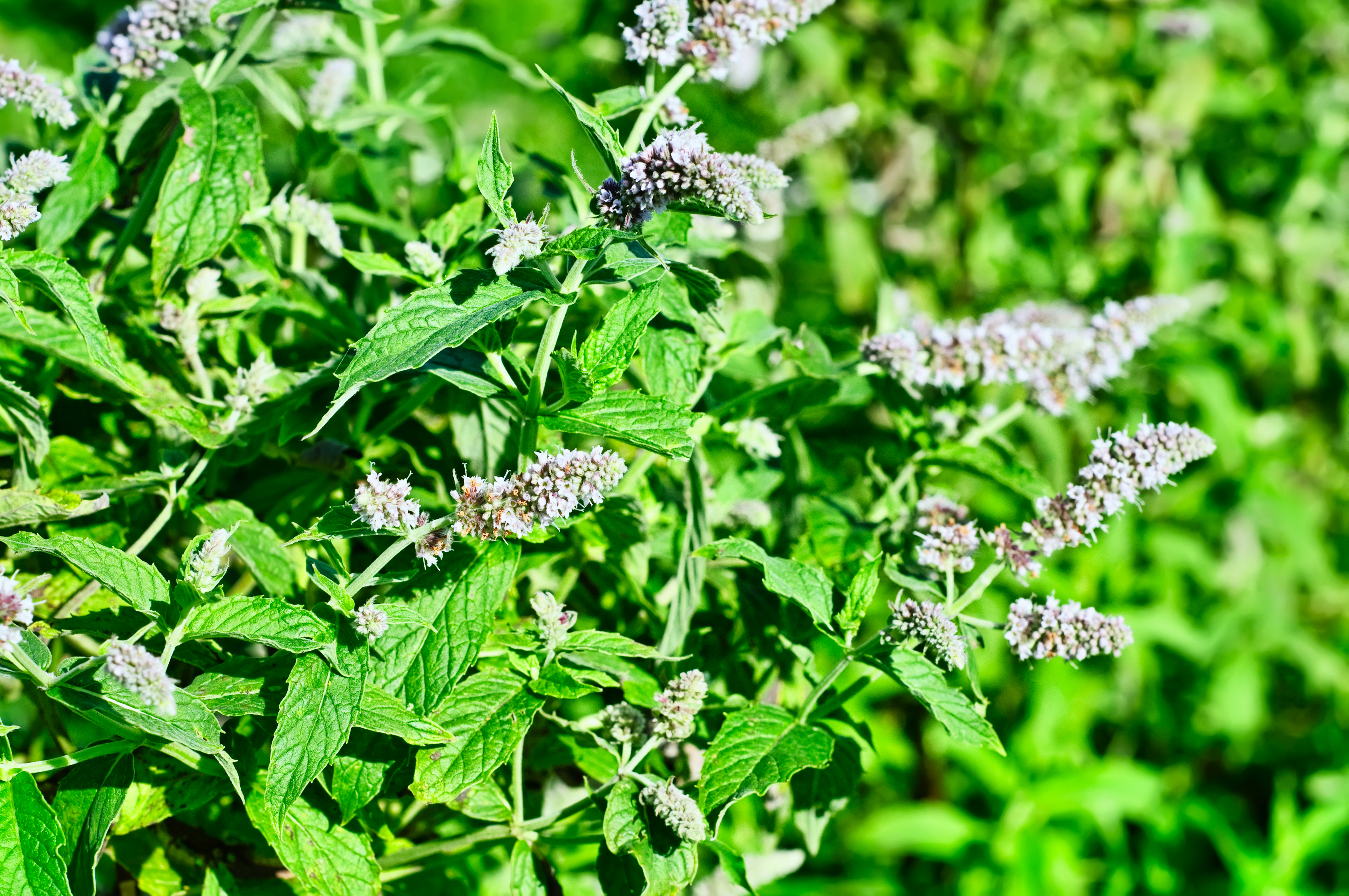
Mint and catnip are related and, like catnip, mint is a very aggressive spreader and self-seeder. So long as mint is contained it is a beneficial addition to the garden, attracting syrphid flies, damsel bugs, minute pirate bugs, and big-eyed bugs. Mint may also have a repellant effect on cabbage loopers and cabbage maggots. Mint usually blooms from late spring through summer; deadheading can help to encourage more blooms and reduce self-seeding.
Oregano
Scientific name: Origanum vulgare
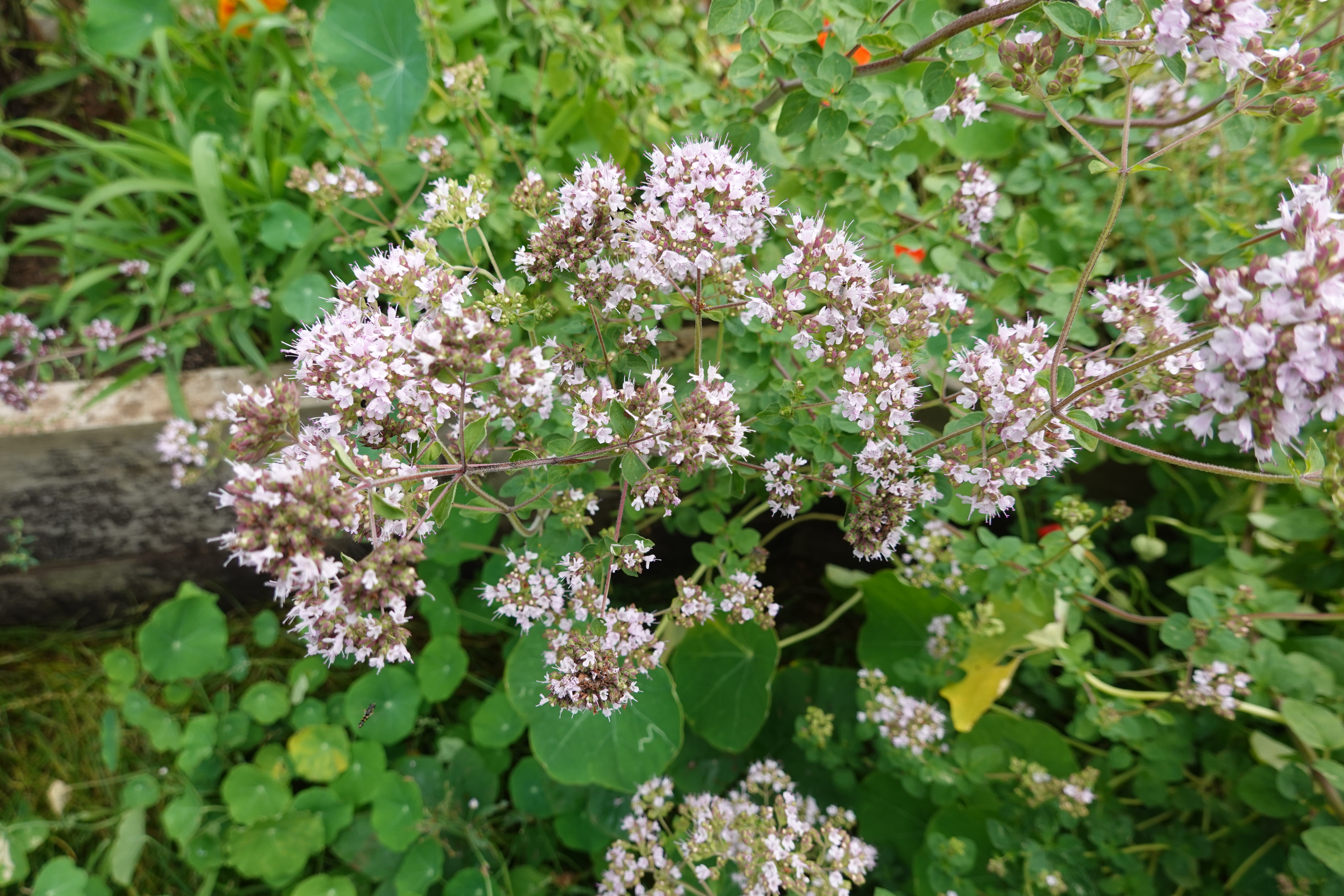
Oregano is attractive to a variety of predatory and parasitic insects such as syrphid flies, tachinid flies, parasitic wasps lacewings, lady beetles, and minute pirate bugs. Oregano may also help to repel aphids. Oregano tends to bloom in mid-summer. The leaves are more flavorful before the plant forms flowers, but do not harvest too aggressively if you want to encourage blooms.
Parsley
Scientific name: Petroselinum crispum var. crispum, P. crispum var. neapolitanum
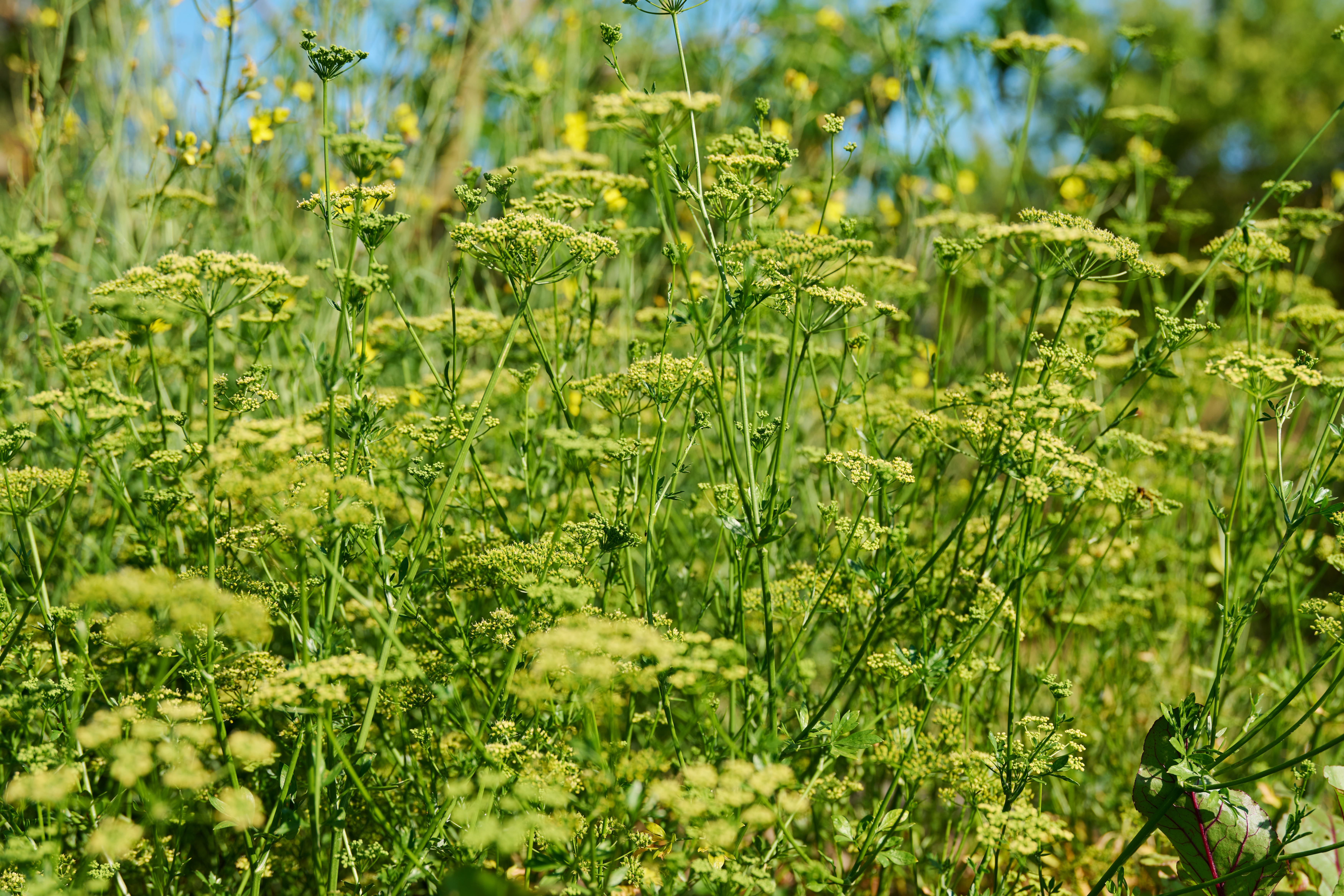
Parsley is attractive to syrphid flies, lady beetles, parasitic wasps, and tachinid flies, Like dill, parsley is also technically a biennial but it can flower in the first season especially if exposed to extremes of hot or cold weather. Parsley also plays host to black swallowtail butterfly larvae, sometimes called parsleyworms. While they do eat parsley, they usually do not cause major destruction especially in the home garden.
Sunflowers
Scientific name: Helianthus spp.
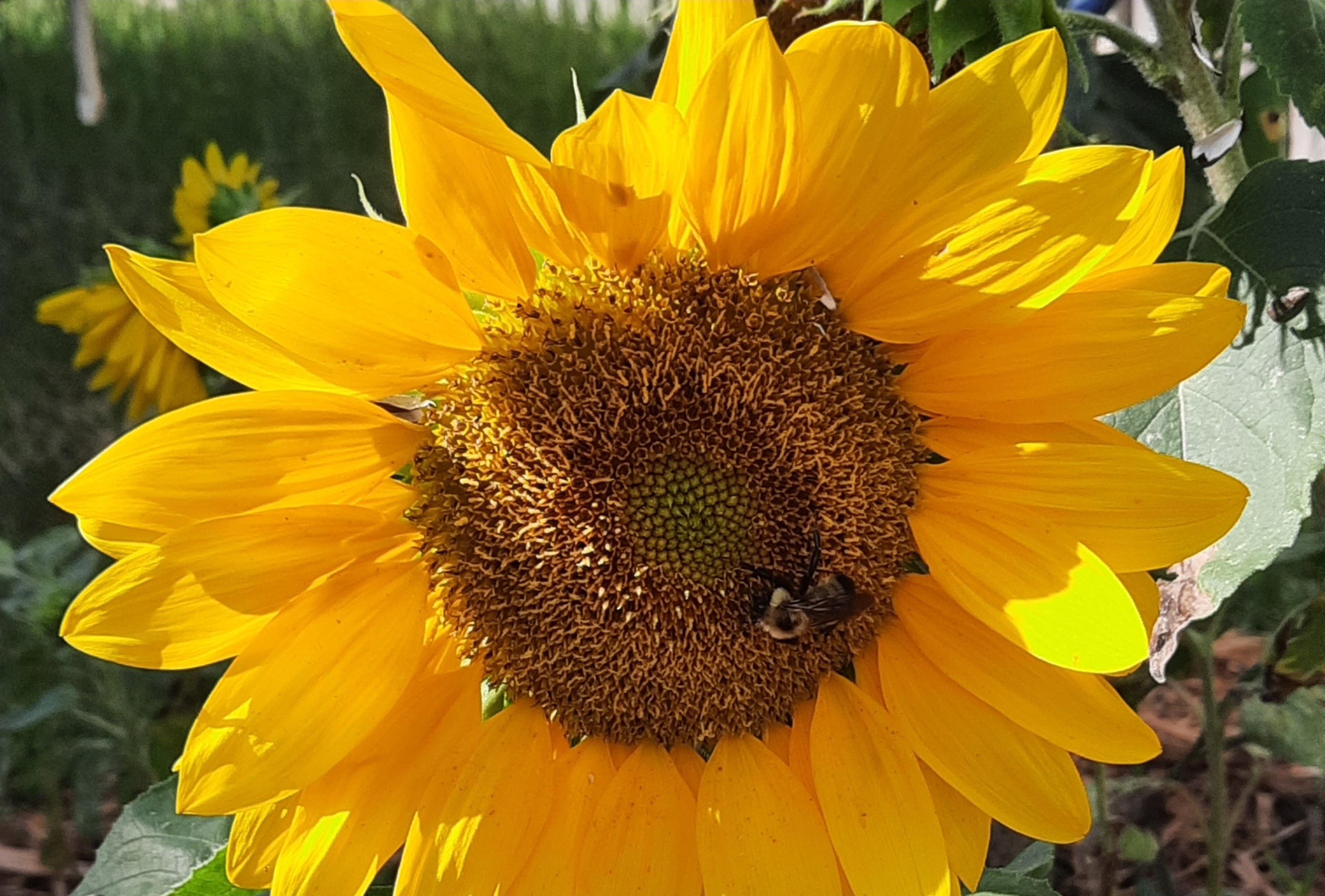
Sunflowers are a tall and striking addition in the vegetable garden. They are attractive to syrphid flies, parasitic wasps, lady beetles, and minute pirate bugs. Note that some speciality sunflower varieties do not produce nectar or pollen so they will not be helpful for beneficial insects (nor pollinators). Sunflowers usually bloom in late summer and early fall, providing a great late-season food source. Because sunflowers are tall and may share pests and diseases with other garden plants (more so than some of the other insectary plants), choose a location where sunflowers will not interfere with or shade out other garden plants.
Sweet alyssum
Scientific name: Lobularia maritima
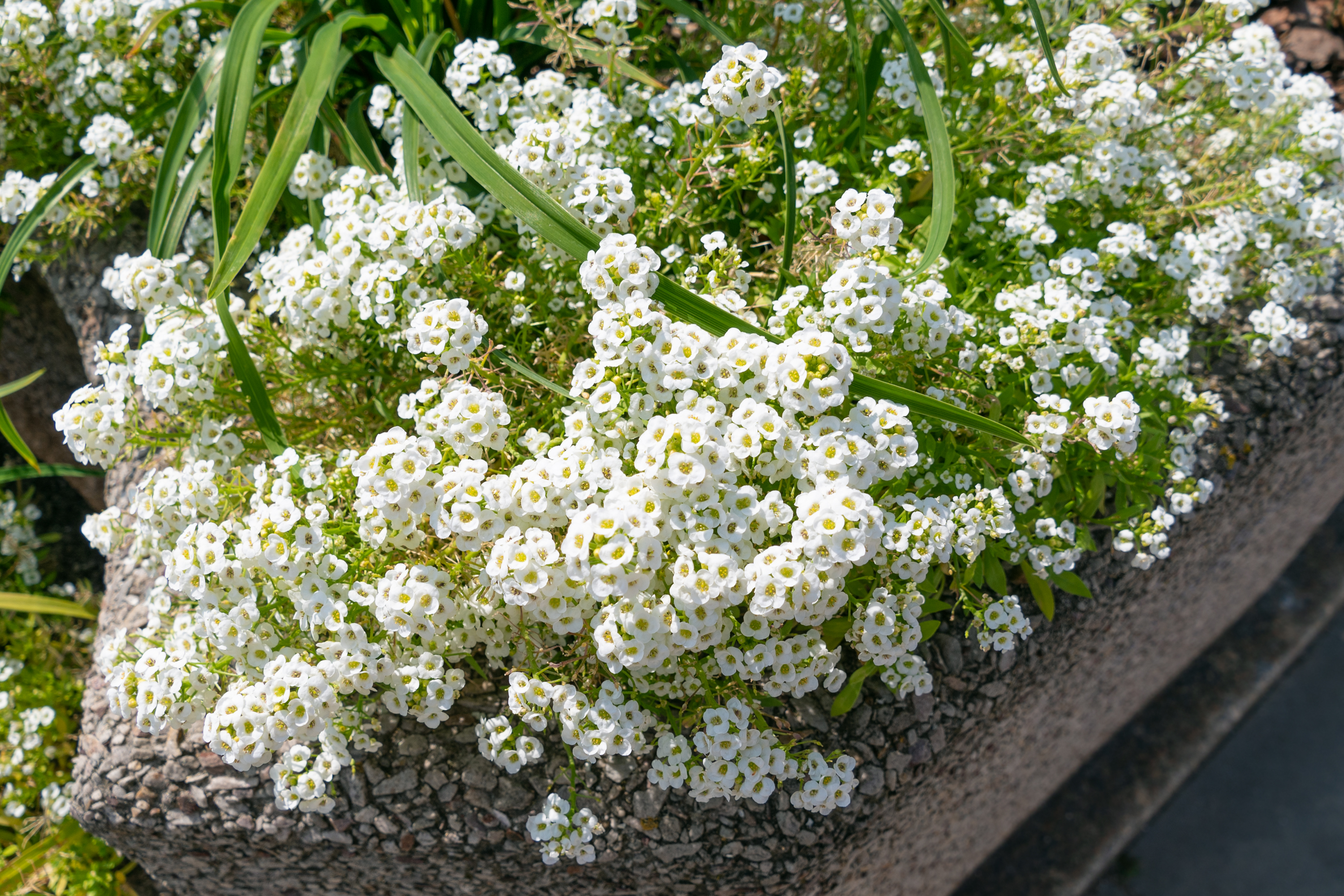
Alyssum is a well-documented insectary plant that is attractive to syrphid flies, lacewings, tachinid flies, lady beetles, minute pirate bugs, and parasitic wasps. Because it is a compact, low-growing plant, alyssum can be tucked into almost any empty space in the garden to lure in beneficial insects (and to help suppress weeds and retain moisture). Alyssum can bloom from summer to fall, although it may slow down during very hot, dry weather. Keep alyssum well-watered and deadhead regularly to encourage continuous blooming.
Thyme
Scientific name: Thymus spp.
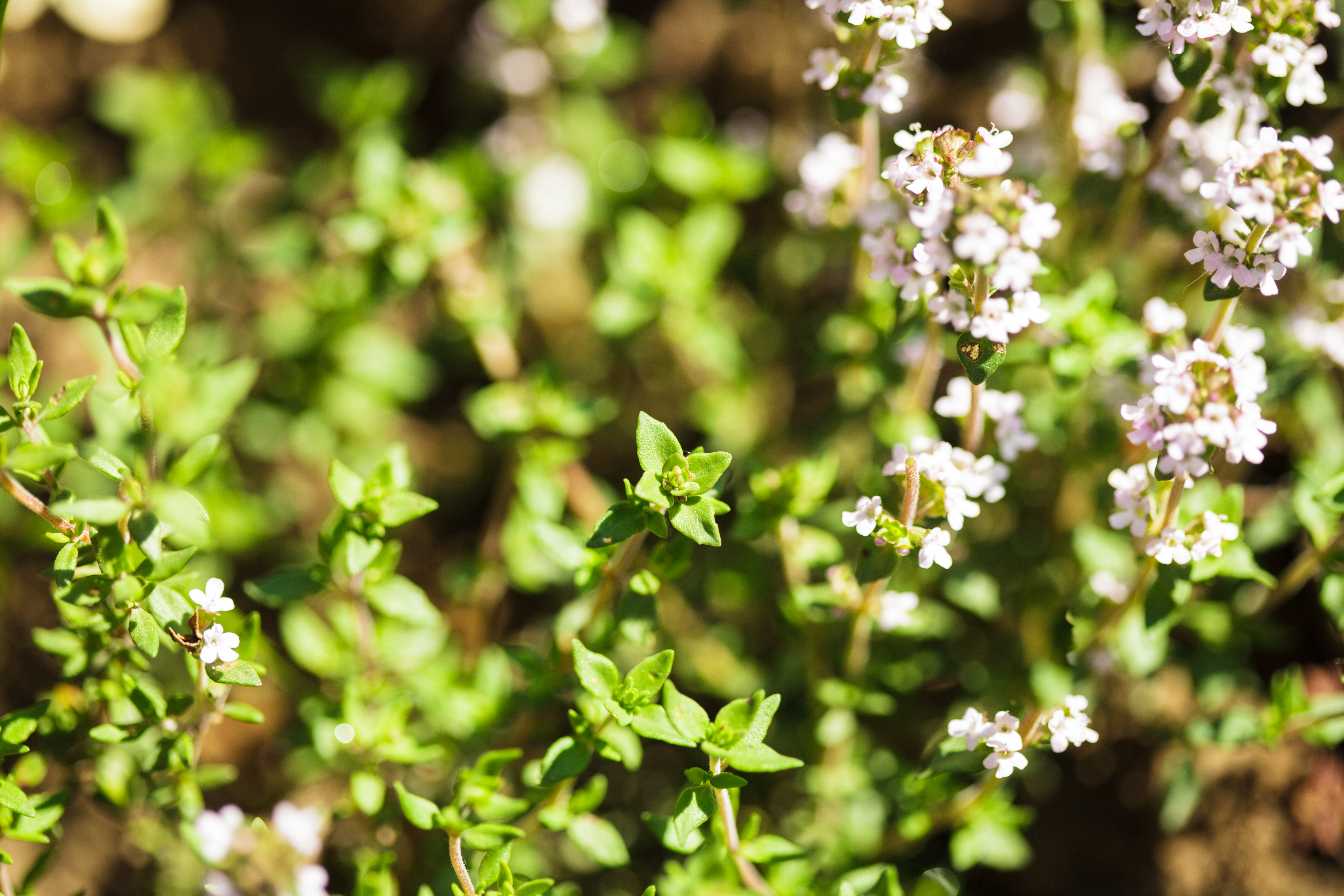
Beneficial insects tend to prefer many smaller flowers rather than individual larger flowers. Thyme, with its dainty white or pink flowers, is highly attractive to parasitic wasps, syrphid flies and other beneficial insects. Thyme can also help to repel whiteflies and cabbage moths. Thyme will typically bloom from late spring to summer. As with oregano, thyme leaves are best harvested right before the plant flowers but do not harvest too aggressively if you want to encourage bloom.
There are certainly many more insectary plants than the ones listed here! Of course there will be native plants specific to your area that can help to attract local beneficial predatory and parasitic insects to the garden. Also, research is just beginning to understand how particular garden plants can be best used for natural pest control. No matter which plants you choose, adding a variety of flowering plants in the garden is a great way to beautify the space while providing potential benefits to your edible crops!
